Inside: Do you really want homeschooling to work for your family, but you’re afraid you won’t do a good job? These homeschooling tips can take you from insecure beginner who constantly wonders whether “real teachers” can give your children a better education, to confident homeschooler who is more than equipped to homeschool as long as you have the desire to do so.
I’ll never forget what it felt like to start homeschooling – to be a beginner in every sense of the word. To be where you are right now.
You’re excited, almost giddy, to dive into all the new and pretty homeschool resources you’ve purchased.
But you’re also terrified to fail at this homeschooling thing, terrified that your kids will miss something crucial because you chose to walk away from traditional school.
Maybe you wake up in the middle of the night thinking, “Can I really do this? Will my kids love homeschooling? Will they hate me for it later? Will they get the education they need to be successful adults? Am I going to fail them?”
I know you have those questions and fears because I did, too.
And you need to know that five years later, those questions no longer keep me up at night. I’m no longer worried that I’m not doing enough or that I might be failing my kids or that some teacher in the school down the street could do a better job.
I am confident that as long as I have the desire to homeschool, I can give my kids a great education. And that same confidence is available for you.
From Insecure Beginner to Confident Homeschooler
Since that first day as an extremely insecure beginner homeschooler, I’ve added two babies to our family, built a business, wrestled with postpartum depression, moved long distance (twice), and lost a parent. You know: life happened.
I’ve come *this close* (picture two fingers a few millimeters apart) to putting my kids in school.
But I didn’t. And it’s because of these tips that I didn’t quit.
These 20+ homeschooling tips for beginners are what helped me to leave behind my very schoolish way of thinking about learning and education -the main reason I almost quit. They are the reason I am the confident homeschooler I am today.
Because of these homeschooling tips, I can work from home, homeschool, get time to myself, have a big family, and not lose my mind.
But most important of all, these tips are why I am 100% confident that homeschooling is not only the best choice for my kids, but it’s also setting my kids up to one day live their best adult life.
These tips have the power to silence the questions that make you feel like you’ve never doing enough and give you that same confidence.
Related: 30 Quick & Easy Homeschool Lunch Ideas

20+ Homeschooling Tips for Beginners
These tips are in no particular order.
Read through them as you have time, and come back to them when you’re doubting your choice to homeschool!
1. Don’t try to recreate school at home.
For some families, school is a great option. But school is designed to accommodate classes of 25-30 students each.
That means schools build in time for bathroom breaks, transitions, recesses, lunches, assemblies, and so.much.more in order to make school work for that many kids.
Curriculum is designed to teach 25 students at one time using the instruction method that works best for teaching at that scale (not necessarily how the majority of children learn best) – lectures.
Most schools don’t leave room for extra questions or different learning styles. It’s not that teachers don’t want to: they simply can’t do it AND meet their benchmarks.
Your formal school day doesn’t need to last six hours, or even an hour for early elementary school! Your kids don’t need to sit at the table or do worksheets if that’s not what works for them.
Recreating school at home is kind of impossible, anyway. And homeschooling gives you so much freedom to do things differently: use it.
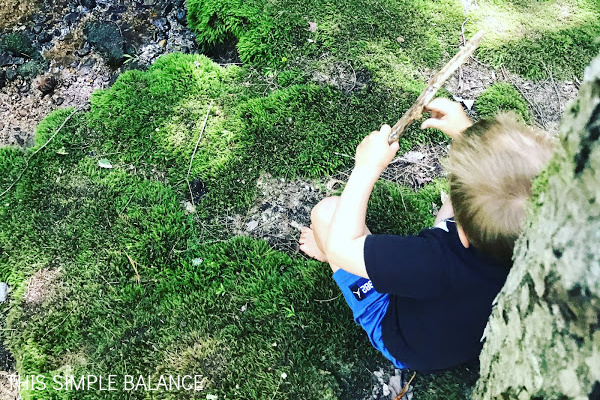
2. Take the time to deschool. If you didn’t, go back and do it ASAP.
If you are a homeschool parent, there is a high likelihood that you attended traditional school yourself. Therefore, you probably started homeschooling with a traditional school mindset about all things education.
That mindset is really hard to shake – for both you AND your kids. I know because it took me five years to truly let go of it.
Deschooling can be defined as removing the influence of the formal education system from your way of thinking.
Kelly at Fearless Homeschool
You don’t realize all the ways the conventional education system influences your thinking until you start homeschooling.
It hits you when…
- you have a hard time picturing school not at a desk, not using workbooks, not using textbooks or set curriculum
- you have a hard time “counting” learning that happens outside the hours you deem to be “school time”
- you worry about the gaps your child might have in his education because you decided to homeschool.
As for your kids, schools tend to suppress natural curiosity and a natural love of learning. It’s sad, but true.
(A teacher can’t answer every organic question with a class of 25 AND teach everything the state requires. And eventually, kids stop asking.)
If your kids attended school at all, they may not immediately seem to want to learn at all, much less love learning. They might not want to “do school” at all, and if you don’t take a break to deschool and allow a natural love of learning to return.
So take a break before jumping into your homeschool plans. Read books about homeschooling and education.
Play. Go to parks and museums.
When you start to see that natural curiosity return, that natural drive to learn and to build and to create? That’s when you know your deschooling period is done.
3. Believe that your children not only want to learn, they are naturally driven to learn.
Mindset is SO important in life, and it’s just as important in homeschooling.
If you start homeschooling believing that part of your job description is to that your kids learn (because what child wants to do school?), you’re going to have a hard time.
If, on the other hand, you believe that your kids are made to learn and that they want to learn, and that you only need to figure out WHAT they want to learn and teach them THAT, it’s a game-changer.
Your job description just changed from briber/coerecer/arm-twister to guide/mentor/invitation-maker.
I’ve talked to homeschool moms for whom every day is a battle just to complete one worksheet. It sounds exhausting, and it is (I’ve tried it).
You get to choose.
For more on this concept, see the book Free to Learn by Peter Gray.
4. Be prepared to scrap all your beautiful homeschool plans, reassess and pivot.
I’ve seen it happen over and over again: new homeschool mom starts out the school year with so many beautiful plans.
She purchases shiny brand new curriculum. She crafts what seems to be the perfect homeschool schedule. She’s ready to check all the boxes and ROCK homeschooling.
That first week, homeschooled child(ren) meets homeschool mom’s curriculum and homeschool mom’s schedule.
Disaster.
A couple of months later, it’s clear something isn’t working. The adjustment period is over, and you’re still fighting over math and taking hours to get through one chapter of a read aloud.
And that schedule? Ha! What schedule?
You can have the very best homeschool plans in the world, but if your real life children (not the ideal ones in your mind that you planned for) or YOU hate them? You need to go back to the drawing board.
Hold your homeschool plans loosely, especially if you’re a beginner.
Related: Our Relaxed Homeschool Plans for 2020
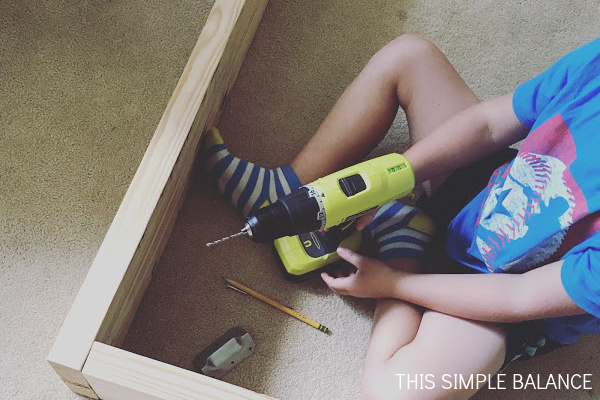
5. Stop compartmentalizing academic subjects.
Schools love to put subjects into little boxes, separating math from writing and reading from science.
But is that really how life works?
Don’t scientists use science, math, writing, reading, and maybe even a little history all at once? Don’t accountants use reading, writing, math and law to do their jobs?
In real life, everything blends and overlaps. You can’t tell where one subjects stops and another begins.
When you stop separating subjects, you can check off multiple subjects by reading and discussing a single picture book, or by copying a single passage from a book.
A whole new world of possibilities opens up to you.
6. Teaching more than one child? Use the same resources.
If you are homeschooling multiples, you need to streamline your homeschool resources. I’ve used the same resources to teach everything from history to math (Life of Fred Elementary Math is perfect for this!).
Trying to tailor all major subjects to each child’s level will drive you crazy. That kind of homeschooling also doesn’t leave much time for you to do anything other than homeschool.
Find resources you can use with everyone, and minimize one-on-one instruction whenever possible.
Side Note: The one subject I always do one-on-one is reading. I use regular reading aloud and, when they’re ready, THIS super simple, but surprisingly effective reading curriculum.
7. Embrace educational screentime: stop limiting it.
Boston College psychology professor Peter Gray in his book Free to Learn compares the computer with the bow and arrow of tribal culture.
When he studied tribes in Africa and South America, he found that children as young as two were allowed to play with the key weapons of tribal culture.
Instead of restricting access until children were “old enough”, they were supervised and taught how to be safe with the things that were critical to the tribe’s survival.
Gray believes that the computer (and technology in general) is as critical to modern-day survival as the bow and arrow was to the tribes. When we limit access, we automatically put our kids behind their peers.
Screens have SO much to offer our kids. From youtube channels to documentaries to educational apps.
When we stop seeing screens as evil things that rot our kids brains (who came up with that saying anyway?), you can finally see how much screens have to offer.
Related: The Case for Unlimited Screen Time (from a Recovering Control Freak)
8. Discover the truly magical power of reading aloud.
If you don’t already include reading aloud in your homeschool days, pick up a book right now and start reading!
Reading aloud is the core of our homeschool. We read chapter books, picture books, history books, poetry books, magazine articles.
Don’t think you need to read books you hate just because someone “important” said such and such book is a classic – you have to read that one. Start by sharing the books you loved as a kid with your kids. Then branch out from there.
Grab picture books from the library shelves that look interesting to you (with picture books, it’s o.k. to judge a book by its cover, and maybe by its title, too).
Reading sparks thought-provoking conversation with your kids, lets you cover multiple subjects in one fell swoop, and helps you instill empathy in your kids by sharing the stories of people who live life differently than they do.
For more on the benefits of reading aloud, check out The Read-Aloud Handbook by Jim Trelease and The Read-Aloud Family by Sarah MacKenzie.
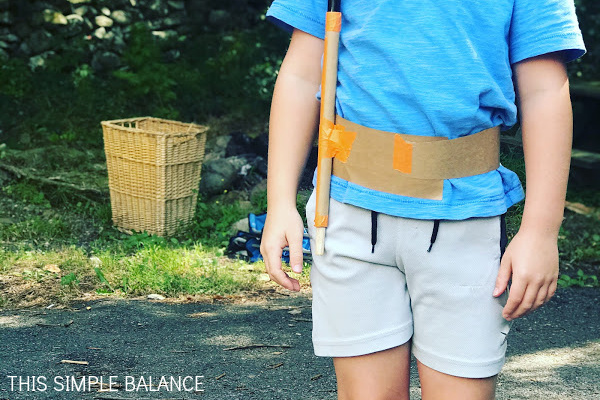
9. Always be gathering ideas for your homeschool, but remember that they are just that – ideas.
One of my kids doesn’t learn the way I love to homeschool.
He is not an auditory learner. He can listen for about 10 minutes at a time without getting distracted.
History doesn’t interest him hardly at all.
He is very hands-on and is a dabbler, jumping from interest to interest extremely quickly without going deep in almost anything.
But today, I came across the idea of creating a stop motion video with LEGO figures to act out a history story. I asked him if it was something he’d like to try. I was shocked when he said yes.
Follow Homeschool Instagram accounts, Facebook pages, and get on homeschool blogger’s e-mail lists. Join homeschool Facebook groups.
Gather inspiration and ideas everywhere – just don’t hold too tightly to any of them. Filter them through your values and your definition of a good education before you implement them. Remember that just because someone else is doing it doesn’t mean you have to.
But if you find an idea you (and your kids) love, go with it!
Follow me on Instagram: @simplifyyourhomeschool
10. Learn and practice the unschooling art of strewing.
(New Thoughts: Is Strewing Really a Good Idea? An Unschooling Perspective)
Even if unschooling is not your jam, you can still borrow this wonderful method to create invitations for learning.
Strewing is “the process of laying out or scattering interesting items around your home for your kids to discover” (source). Nourishing My Scholar
Observe your kids. See what lights them up. Constantly be looking for resources that might interest them – books, a craft kit, a class, a new educational board game. But that resource and set it out on the kitchen table for them to discover, and let it go from there.
What you need to remember about strewing though is to not pressure your kids to use the resources you find. Strewing is completely free of coercion and control.
If your homeschool budget is tight, you can still use strewing! Simple find free or cheap resources: try using the library, thrift stores, or swapping resources with other homeschooling families.
Homeschool bloggers also offer tons of free worksheets and affordable unit studies.
Related: Unschooling v. Relaxed Homeschooling – What’s the Difference?
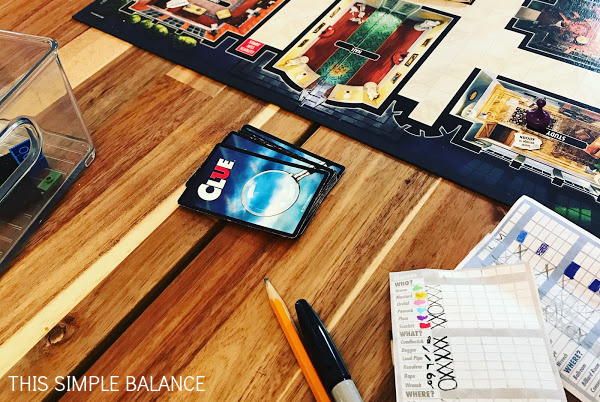
11. Play to your strengths.
Are you a fun-loving, super spunky mom who has tons of energy and loves to get out of the house? Plan fun learning activities like it’s your job (because it is).
Are you a homebody who loves being home and snuggling up on the couch with a good book? Create a list of all the books you loved during your childhood and share them with your kids.
Is art your jam? Make art an everyday thing that you invite your kids to participate with you.
Whatever it is you love, whatever it is you are good at, share that with your kids.
Stop focusing on the things that are like pulling teeth to you and do what gives you energy and fills you up. You can find creative ways to help your kids learn the things that are pulling teeth if they (and you) are so inclined.
But focus mostly on the strengths. When you try to operate in your weaknesses day in and day out, you will be drained.
And if you are constantly drained, you’ll quit homeschooling eventually: guaranteed.
12. Don’t underestimate the power of conversation for learning.
Those conversations you have in the car on your way to karate about the upcoming election? Homeschooling.
The ones you have after reading a powerful picture book? Homeschooling.
The conversations you have about how to handle life’s unexpected, not so pleasant events (you know, the ones that royally screw up your homeschool plans for the day – the plumbing breaks, you have to take a kid to the ER, you break a lamp and have to clean it all up – those days)?
You guessed it: also homeschooling.
Those conversations? They count just as much – but probably more – than all the “schoolwork” in the world.
Related: An Honest Brave Writer Review from a Former Skeptic
13. Establish a homeschool rhythm/routine, not a homeschool schedule.
I’ve seen numerous articles offering sample homeschool schedules that organizes your homeschool day down to the minute.
Besides the fact that life is learning and can’t be confined for hours on a chart, every time I see one, I laugh, thinking, “Does this family have one kid? Maybe two? Is the unexpected interruption a rarity instead of a daily occurrence?”
Even with one or two kids, it’s just not realistic (or beneficial) to expect your homeschool to operate on the same perfectly timed, minute by minute schedule that schools do.
What if math takes longer one day? Will you stop math just because the homeschool schedule says so?
I guarantee that will happen more days than not, with more subjects than just one. To restrict learning to specific times doesn’t make sense when you’re homeschooling.
A homeschool rhythm suggests a basic order you do things every day. It gives structure without restricting things to a single hour time block. It allows for things to take longer or shorter, depending on the day.
Schedules are for schools.
Related: Our Unconventional Homeschool “Schedule”

14. Model what you want to see in your kids.
You want them to be readers, but are you a reader?
You want them to write, but do they ever see you write?
You want them to not watch screens? How often are you using screens?
You want them to not hate math, but how do you talk about math? Do they know that you use it daily? Weekly?
You want them to play outside, but do you ever spend time outside?
If you expect something of your kids, make sure you take a good long look in the mirror first. If you really want them to do or to be XYZ, you need to value it enough to do that and to be that yourself.
Side Note: At the same time, don’t expect your kids to be mini-you’s. They will have different passions and interests. Which brings me to my next point…
15. Avoid placing value judgments on your children’s interests.
For a long time, I observed and evaluated my children’s interests, without even knowing what I was doing.
If it was anything screen-related, I was immediately suspicious. Unless an app was deemed “educational”, I questioned how much time should be spent doing it.
Art? Great. Reading? Also, great (but is Captain Underpants as worthy of interest as Little House on the Prairie?).
Watching TV? Depends on the show. Minecraft? Questionable.
But now I stop and wonder and ask and watch.
What exactly are they getting from this show? What do they enjoy? What are they learning? What connections are they making?
Recently, my daughter remarked about how difficult leadership is, that you can’t make everyone happy and have to make hard decisions.
Where did she learn that? A Trolls movie.
Just because you don’t see something as valuable doesn’t mean they don’t. The more we judge their interests, the more opportunities for connection we forfeit.
And if they are spending their time doing something they truly love, they are learning, even if you can’t see it.
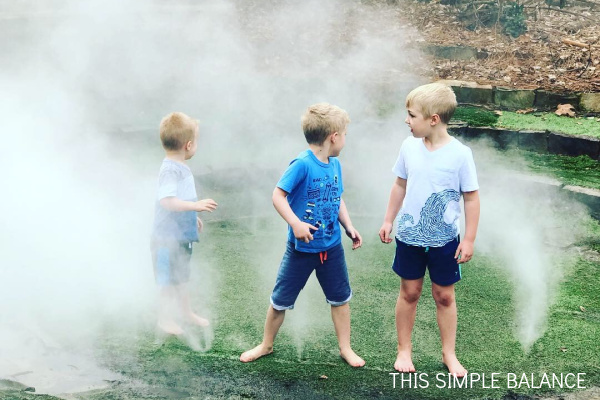
16. Prioritize play, especially during the elementary years.
If you’ve ever read Anne of Green Gables or watched the movie, you’ll know that Anne played with her friends long into her teen years. They were constantly spending their spare time acting out books together, putting on plays, writing for pleasure and daydreaming.
In American culture, we do not value play. We value productivity, and by productivity, I mean that if we don’t have some tangible product or result from how we spend our time, we deem it “unproductive”.
Formal education starts earlier and earlier. We are pushing kids to learn how to read long before many are truly ready for it, and recess has been cut back so far until it’s virtually meaningless.
So what DO kids learn from play?
- Language Skills
- Emotional Regulation
- Turn-Taking
- Concentration
- Fine Motor Skills
- Strength
Beyond these definitive benefits of play, you never know what is going on under the surface, what connections your child is making in their brains during the time that appears to be unproductive to the American eye.
When you make room for play, room for “doing nothing”, you are making space for connections and dreams and passions and rest (another thing the Western world does poorly).
17. Outsource everything in your homeschool that you don’t love, that you possibly can.
That’s a mouthful for you, but I’ve rewritten the sentence a few times now and it says exactly what I mean it to say. Take that grammar police!
Here’s the thing.
You are only one person, homeschool mama (or homeschool dad). And in my humble opinion, you should do a lot more than just homeschool.
There’s the obvious things that need to happen to make a household go round – cleaning, cooking, appointment-making, etc.
You also may want to work part-time (I encourage it!). You never know when your life can change in a moment: homeschoolers aren’t exempt from divorce, disability, or God forbid, unexpected death. Having two incomes offers some protection from the unpredictability of life.
Side Note: Read THIS book to learn what convinced me that being a long-tern, full-time stay-at-home parent is not such a good idea.
You also need to make time for self-care. Homeschooling is amazingly wonderful, but as much as I love having my kids home all day, it is seriously draining.
One way to carve out extra time is to outsource anything you can, especially the subjects you don’t truly enjoy teaching/learning about yourself.
Here are a few ideas…
Hate math? There are several online math options for homeschoolers including Nicole the Math Lady (elementary grades) and Mr. D’s Math (upper grades).
Don’t love reading aloud? Or maybe you do, but you really need to fold laundry instead of reading aloud? Use audiobooks, instead. Honestly, they are probably better at doing all the voices anyways. Everyone listens, you can multi-task. Win-win!
Want to add fun Science experiments, but you don’t have time to look them up? Try subscription boxes, instead. Kiwi Co. and Little Passports Science are ones we’ve enjoyed, but there are so many others.
You don’t have to do it all – so don’t. Outsource, instead.
Related: 9 Flexible, Work-at-Home Homeschool Mom Jobs
18. Embrace the freedoms that homeschooling offers.
You can do school on Saturdays and go to the museum on Mondays – when everyone else is back in school.
You can learn things “out of order”, and let your kids do things differently than school says it should be done (see the next point).
You can take a mental health day, do school year round or take a traditional summer break, spend a month in Paris as part of the school year or do school at night instead of the morning.
The possibilities are endless. You just need to stop thinking school happens within four walls, Monday through Friday, from 9 a.m. – 3 p.m.
Read More: 20 Homeschool Freedoms that Parents Often Forget
19. Make room for outside-the-box thinking in every subject – and let your kids do the same.
Traditional school typically teaches that there is one right way to solve a problem, one right way to write a sentence, one right way to do an experiment.
But what if school is wrong?
Traditional school teaches that there is one right way to write a sentence with compound words. Commas are a must.
Then why in every picture book I read to my kids recently do authors omit commas left and right? And these people make a living writing?
Traditional school teaches that there is one right way to do a math problem. Maybe two. (And even that changes every ten years, amirght?)
What if there are several ways to solve a math problem? Even if one way takes a bit longer or stems from a different way of thinking than that of the person who wrote the textbook.
I’ve watched my kids approach math problems several different ways that I would ever think to do the problem. The determination and joy on their faces is amazing to watch.
When I try to force MY way to do it, that look disappears and is replaced by anything from frustration to discouragement to boredom.
That doesn’t mean you can never teach a different way to do a math problem. Catch them at the right moment, and you can teach your kids almost anything.
Just stop thinking there is one right way to do things and make room for them to show you a different way.
Hint: This kind of thinking will serve you well in more than just education.

20. Know your season, and plan your homeschool accordingly.
Not all homeschool years are alike.
Are you moving long-distance? Having a baby? Adopting? Grappling with cancer? Starting a new job? Going through a divorce? Grieving the loss of a parent? Building a new business from the ground up? Experiencing crazy world events?
Major life events will affect your homeschool. How can they not?
But sometimes we fool ourselves into believing that our homeschool can go on as normal – whatever normal is for you – even when life is anything BUT normal.
If you are experiencing one of the major life events listed above (or one I left out), it’s probably not the time to up your homeschool game.
Don’t add new subjects, try to catch your child up three levels of math, or plan on doing fifty extracurriculars.
Stick to the very basics: reading, writing, math. Some days, if nothing else, read aloud.
Let it be enough and make sure to take care of YOU.
Without you, there is no homeschool.
21. Start small.
I’m reading a book called The Lazy Genius Way. In it, one of the twelve Lazy Genius principles is to “start small”.
If you want to be a runner, run 5 minutes a day. That’s it. Five minutes.
If you want to be a reader, read 2 pages a day. That’s it. Two pages.
When you first start your homeschool year, start small.
Read aloud a single chapter every day at first. Just one.
The second week, add a picture book to the chapter book.
The following week, add an educational board game. Next, throw in a few math problems.
When it starts to break down, back up a step. Reevaluate. Are you doing too much? Is it all necessary?
It doesn’t seem like much, but it’s amazing how much you can accomplish in the small things, how much learning can happen with just a bit of intentional time each day. And once you’ve established that routine, those habits, you – and your kids – might crave more.
Like a muscle that gets stronger over time, that one small daily step makes you stronger, makes room to add in more later on.
Don’t get discouraged when your child can’t do more than an hour or two of intentional homeschool a day (that’s probably all you need for elementary school anyway).
One of the tiniest seeds – a mustard seed – grows into a tree that can be anywhere from 8 feet to 20 feet tall. Imagine what can happen if you read aloud every day.
Start small. Plant a seed of faithful, daily small steps.
See what happens in a month. In six months. In a year.
I think you’ll be amazed.
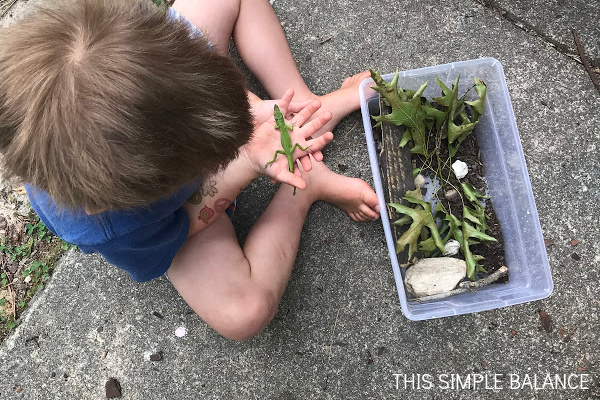
22. Simplify your homeschool using just two questions.
Last homeschooling tip (for now). You’re a champ for reading this far!
This week I was thinking about how many homeschool-related e-mails landed in my inbox today. There are SO many things I could be doing in our homeschool. More than we would ever have time for, even if we homeschooled 24 hours a day, 7 days a week!
Options and resources in the homeschool world abound. That’s probably why homeschooling feels so very overwhelming, especially for beginners.
How can you possibly decide what to say yes to? And what to let go – without the guilt?
You need to start with the end in mind.
Question #1: What makes a great education?
Most of us start homeschooling wanting to give our kids a great education. But how each of us define that? If you’re homeschooling, the answer to that question is vastly different from homeschooling parent to homeschooling parents.
One parent believes a great education is a classical education. To another, a great education means giving their children the freedom to pursue their own interests, believing it will lead to meaningful work and a fulfilling adult life.
For others, a great education is making sure their children have checked every box they would need to attend college. Still another highly values connection, and other than that, making sure their child has the most important skills needed for adult life – reading, writing, basic math.
None of these answers are right or wrong, but knowing what you believe makes a good education gives you a filter that will help you sift through the endless oceans of homeschool options.
Question #2: What are your top three values?
The book The Minimalist Way by Erica Layne was life-changing for me. She suggests that minimalist living should be based on knowing our values in every sphere of life.
After doing the suggested exercises, I discovered my values in every sphere of life are simplicity, freedom and meaningful work. Knowing those values helps me make better decisions in my work, our family life, and in our homeschool.
If a homeschool resource, philosophy or idea doesn’t match those values? It doesn’t get let into our homeschool. Period.
I highly recommend the book, but if minimalism as a whole doesn’t appeal to you, you can find a list of values online and determine your three for your homeschool.
The Most Important Homeschooling Tip that No One Tells You
No one tells you how uncertain you’ll feel when you start homeschooling, how often you’ll question your choice to homeschool. At least, no one told me.
And because no one talks about it, they don’t tell you this, either: if you really want to homeschool, you can find a way
When I chucked most of that shiny new curriculum I bought two months into my first year homeschooling, I wasn’t sure what I was going to do. Maybe I wasn’t cut out for this after all.
If shiny new curriculum wasn’t working, maybe the problem was me. What if I wasn’t cut out to homeschool?
Every time I encountered those thoughts, every obstacle I encountered over the past five years, I had a choice to make: persevere or quit.
Thank God, every single time I chose to keep going, to keep homeschooling even though it often felt like I was wandering around in the dark.
The perseverance paid off because finally, five years later, I feel completely confident, at peace with the choices I’ve made, our style of homeschooling, the education we’re giving our children.
Ultimately, the best tip for successful homeschooling is perseverance.
Not the perseverance where you try the same thing over and over and expect different results.
No, I’m talking about the kind of perseverance where you refuse to give up. The kind where you’re determined to find some way to make this homeschool thing work.
The kind of perseverance where you’re willing to read all the books, and try all the methods, and talk to every homeschool parent you possibly can about what they’re doing that works for them.
And you’ll never stop searching until you find the way of homeschooling that works for your kids and for your family.
The right methods, the right style, the right answers are out there – you just have to be stubborn enough to not stop looking until you find them.
So the very best homeschooling tip I can give you is that if, deep down, you really want to homeschool, don’t give up until you find a style of homeschooling that makes you and your kids THRIVE.
You helped your child learn how to walk and talk and eat and use the bathroom and a host of other things. You can help them learn everything else they need to know, too. Really.
You can do this. I believe in you!
Read Next: 24+ Benefits of Homeschooling Your Kids



This article was so on point and so confirming (amd comforting) for me that I literally teared up. FINALLY, someone gets me and understands. FINALLY, I found some advice I will take and that doesn’t make me feel more judged than I already feel. My only question is: how do I grade the stuff we do doing it like this article suggests? In my state grades are not required, and maybe its part of the public school way of thinking, but I want to grade it somehow to 1) know that they are getting it, 2) cause of an ex husband that loves to make me look like a neglectful and incompetent mother, and 3) my son says “but mom if we don’t have a report card, we don’t get free donuts!!” (Krispy Kreme gives a free donut for every A or equivalent lol. I could buy it myself, but it doesn’t seem as special or rewarding to them that way.
Hi Carla! I’m so so glad this article spoke to you. About grades, there are a few routes you could choose, depending on your preference and that of your kids. If they (and you) really want grades, talk through what grades mean to you – and to them. Traditionally, grades are designed to create competition AND to measure whether or not the desired information taught has been retained. Do they want to be measured that way? Do you want to measure your kids that way – for them or for you? Do they want to be measured based on effort? And effort on what? All things to think through. Often, grades make parents feel better – whether their kids are in traditional school or homeschooled, it makes us feel like we are doing something right in life (don’t beat yourself up if you feel that way). Definitely take some time to process WHY though. With your ex, it might not be worth the fight, even if you decide you don’t want to do grades. I would seek advice in relaxed homeschooling or “almost unschooling” groups (or unschooling groups, if you decide that’s where you want to be). You’ve got this mama! One day at a time, one year at a time. Be gentle with yourself – deschooling is difficult, exhausting work, but you’ll get there bit by bit. Hugs. -June